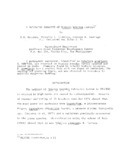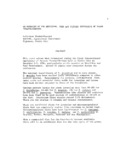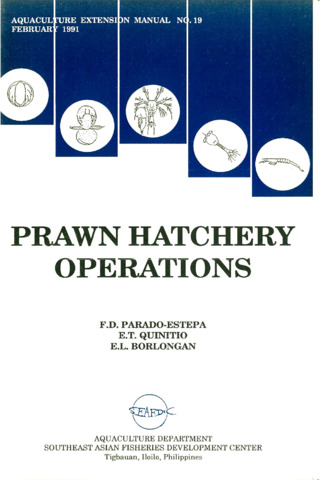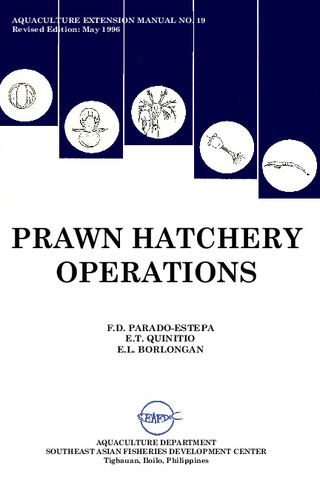A suctorean parasite of Penaeus monodon larvae
Share
Abstract
A pathogenic suctorean, identified as Ephelota gemmipara was observed in P. monodon larvae spawned and reared in tanks. Commonly found to inhabit hydroid colonies, E. gemmipara has a stalked body with two types of tentacles, the sucking and piercing types, and was observed to reproduce by multiple exogenous budding.
Description
ALSO IN: Quarterly Research Report / SEAFDEC Aquaculture Department, 1st Quarter (Jan-Mar), 1977, pp 6-11. Extended abstracts.
Suggested Citation
Gacutan, R. Q., Llobrera, A. T., Santiago, C. B., Gutierrez, P. J., & Lio-Po, G. (1979). A suctorean parasite of Penaeus monodon larvae. In D. H. Lewis & J. K. Leong (Comps.), Proceedings of the Second Biennial Crustacean Health Workshop, 1977 April 20-22, Galveston, Texas (pp. 202–213). College Station, Texas: Sea Grant College Program, Texas A&M University.
Subject
Taxonomic term
Collections
Related items
Showing items related by title, author, creator and subject.
-
An overview of the nutrition, feed and feeding techniques of prawn penaeid/shrimps
Piedad-Pascual, Felicitas (Philippine Council for Aquatic and Marine Research and Development, 1989)This paper echoes what transpired during the first International Conference of Penaeid Prawns/Shrimps held in Iloilo City in December 4-7, 1984, particularly on the Nutrition nd Feed Development. Around 25 papers were ... -
Prawn hatchery operations
Parado-Estepa, Fe D.; Quinitio, Emilia T.; Borlongan, Emeterio L. (Aquaculture Department, Southeast Asian Fisheries Development Center, 1991-02)The manual, an updated version of the 1984 SEAFDEC/AQD manual, presents the underlying principles and step-by-step instructions of prawn larval and post-larval rearing. The techniques described are not only applicable to ... -
Prawn hatchery operations
Parado-Estepa, Fe D.; Quinitio, Emilia T.; Borlongan, Emeterio L. (Aquaculture Department, Southeast Asian Fisheries Development Center, 1996-05)The manual, an updated version of the 1984 SEAFDEC/AQD manual, presents the underlying principles and step-by-step instructions of prawn larval and post-larval rearing. The techniques described are not only applicable to ...






